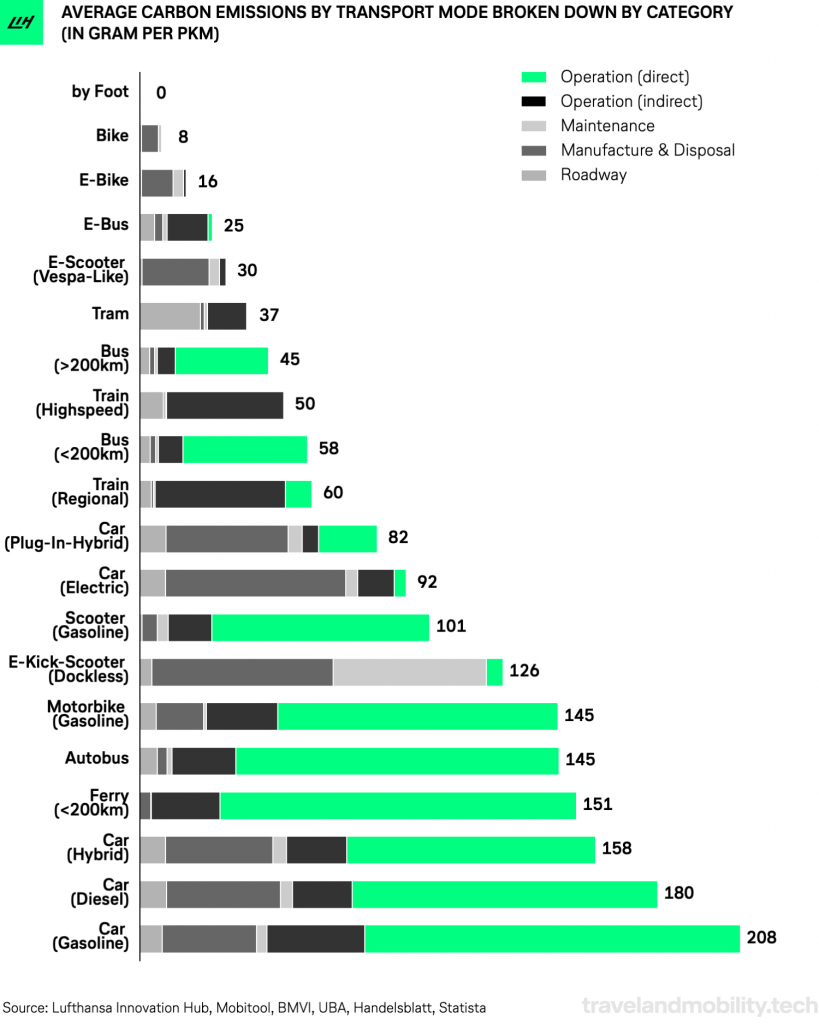A small amount of research on the internet will provide a considerable amount of data on the Greenhouse Gas (GHG) emissions for various modes of transport. The main GHGs are Carbon Dioxide and Methane that cause heating of the Earth’s atmosphere by absorbing the Sun’s energy. The source of much of the Carbon Dioxide is from burning fossil fuels to power various modes of transport.
| Source of GHG | % of national output |
| Transport | 28% |
| Energy production | 23% |
| Business | 18% |
| Residential | 15% |
As transport is the largest contributor to GHGs, it is important for us to have an idea of the amount of GHGs we are emitting on our journeys so we can make judgments about the best ways to travel.
Do electric cars really have zero emissions?
Information provided by the Energy Saving Trust gives an indication of the GHG emissions produced per passenger on a journey from London to Edinburgh (2018) by different modes of transport.
| Mode of transport | Kg of CO2 / passenger | g of CO2 /passenger km |
| Plane | 144Kg | 222g |
| Car | 117Kg | 180g |
| Train (average Diesel/Electric) | 29Kg | 45g |
| Electric car | 0Kg | 0g |
The information above relates only to the fuel consumed during such a journey. Do electric cars really have zero emissions? No consideration has been given to the GHGs generated in producing and disposing of the vehicles, transportation to the customer, the manufacture of tyres and maintenance of the vehicle and maintenance of roads etc. Obviously, trying to undertake such calculations is complex and subject to some educated guesswork. However, some people are trying to do this in order to give a full account of the GHGs associated with each mode of transport.
The chart below shows one attempt to do this:

This suggests that electric vehicles do have a carbon footprint (92g/ passenger Km) and that that footprint is about half that of a conventional car (200g/passenger Km).
The production and disposal of electric cars is less environmentally friendly than those with an internal combustion engine. Also the level of emissions from electric cars can vary depending on how their electricity is produced. If the electricity was from a fossil fuel power station the emissions would be greater than if the energy was from renewable sources.
It would appear that that electric cars have about half the carbon footprint over their lifetime as conventional cars, it is certainly not zero.
Finally, does walking really have a zero carbon footprint? What about the manufacture and transportation of the shoes and all the snacks consumed whilst walking?
David Everson
EEAN Transport Group
